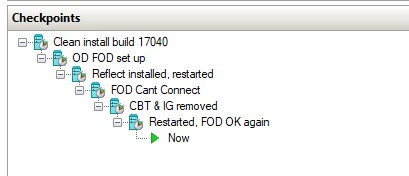New
#10
Are these checkpoints independent from each other? Or do they store the system state in differencing images? If so, how would we merge them?
To keep or restore a vm from a backup, would it be sufficient to backup that one relevant checkpoint and the relevant configuration file only?
To store a backup, does it matter if the vm is in SAVED or OFF state?
thanks in advance
Gerhard


 Quote
Quote




 as I'm a somewhat dummy in Linux.
as I'm a somewhat dummy in Linux.
